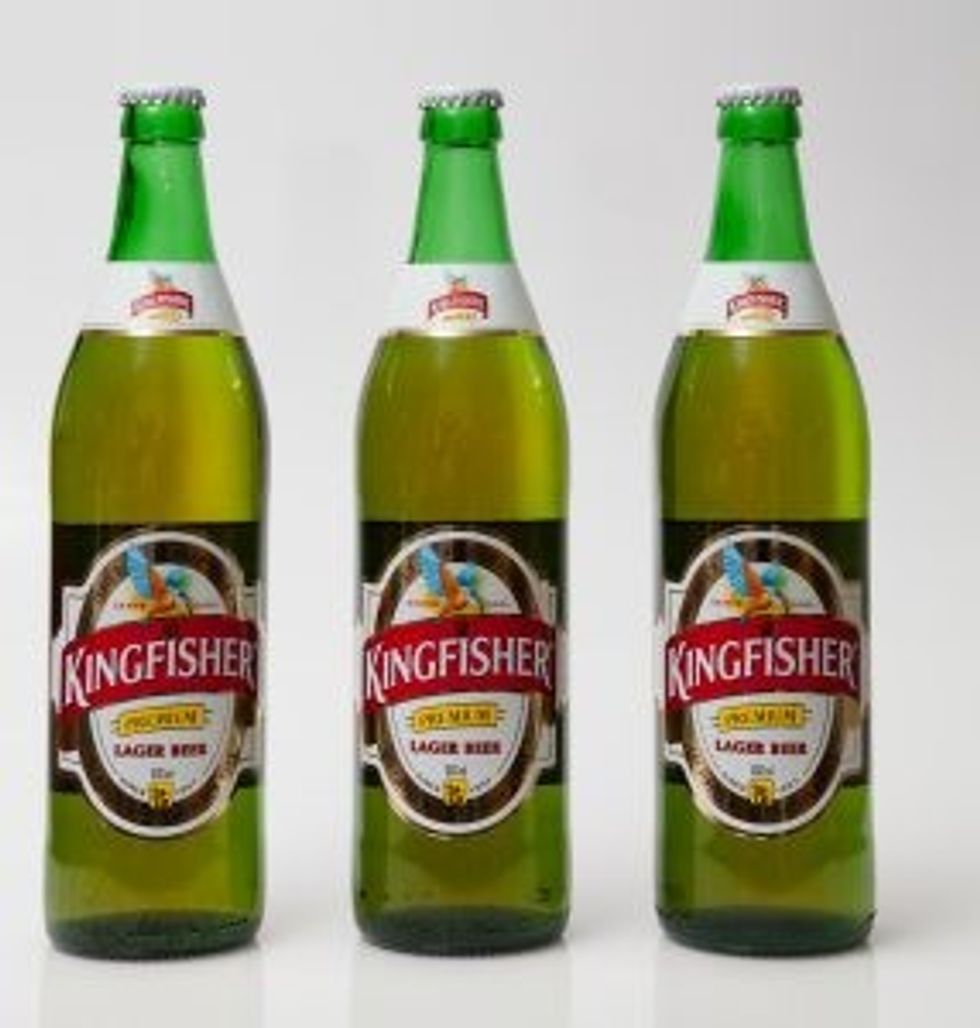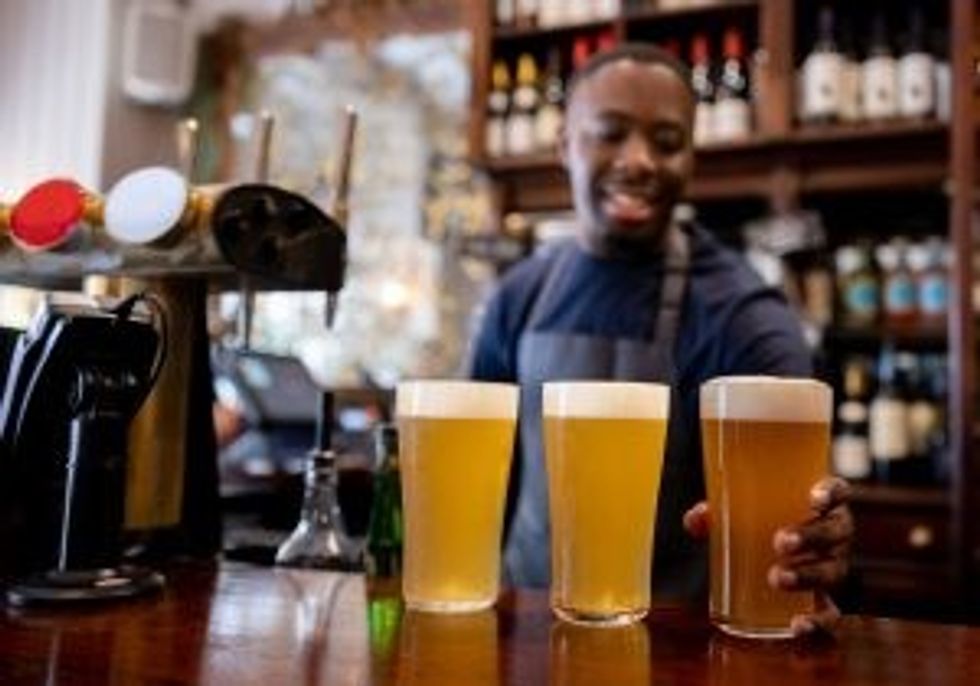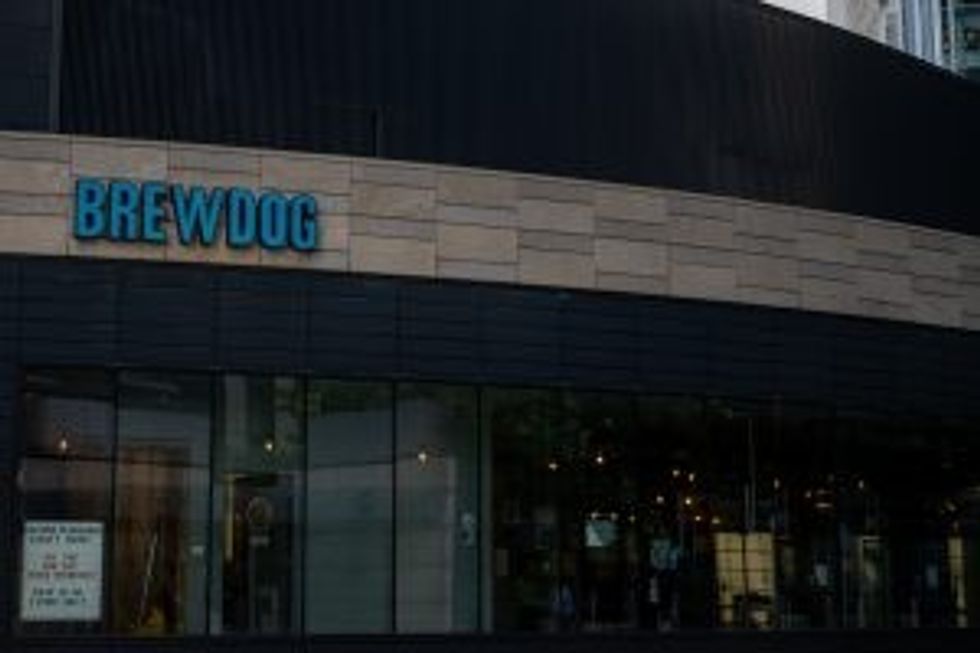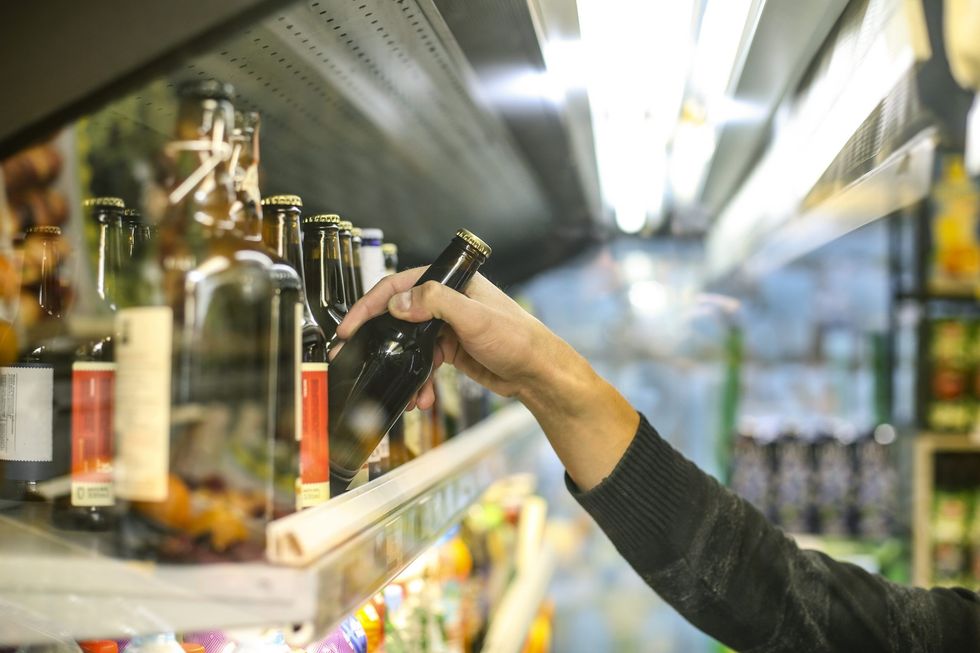Summer is almost here – a youthful season filled with social activities and celebrations, making itself a metaphor of good times.
Britons indulge in warmer outdoor occasions and social gatherings in summertime – from at least June to August – often enjoying their precious moments quaffing a crisp, chilled beer with family and friends.
Beer and cider categories turn out to be a standout winner in the UK’s retail landscape and continue to experience remarkable growth in the off-trade channel with an estimated worth of £5.95 billion, reveals Kantar data.
“The nation eagerly looks toward the season of BBQs, parties and festivals – all of which are often accompanied by an ice-cold beer – that will soon be here,” says Miriam Thompson, off-trade category development manager at BrewDog PLC. “The country’s thirst is relatively unaffected by inflation, perhaps transferring to an extent from on- to off-trade under price pressure but remaining consistent. Beer, lager and cider are still the UK's most popular alcoholic refreshments, accounting for 65 per cent of total consumed.”
BrewDog, Heineken, San Miguel, Stella Artois, Carlsberg, Carling, Guinness, Corona, Kronenbourg, Birra Moretti, Amstel, Peroni, Bass, Tennents, Fosters, London pride, Innis & Gunn and Sol remain some of the top beer brands.
The market also has a wide portfolio of cider brands to choose from including Old Mout, Thatchers, Aspall, Kopparberg, Brothers, Crumpton Oaks, Rattler, Cornish Orchards, Henry Westons, K, Bulmers, Lilley’s, Magners, Old Rosie, Rekorderlig, Woodpecker, Thistly Cross, Alaska, Cranes, Diamond White, Dunkertons, Hawkes, Frosty Jacks, Black Dragon, Dickens among others.
“It’s unquestionable that consumers are feeling the pressure from the cost-of-living increase, but they are also unquestionably seeking out treats that excite and reward to offer some small distractions from day-to-day concerns,” said Nicola Randall, head of marketing at Brothers Drinks Company. “These distractions won’t solve anything, and they won’t save anything, but they might just create enough of an enjoyable diversion to appeal. So, consumers are looking for joyful, fun food and drink products that amplify flavours, colours, textures, aromas and interactivity.”
Opportunity in crisis

The UK’s cost-of-living crisis has opened a window of opportunity for retailers to exploit as consumers with lower disposable income tend to make fewer visits to pubs, bars or restaurants and would conveniently purchase a beer and enjoy at home.
“Independents must ensure that they are fully stocked up with their regular customers’ preferred brands so that there is no reason for them to go anywhere else,” says John Price, head of marketing at KBE Drinks. “With an increasing number of consumers making less visits to pubs, bars and restaurants at the moment due to on-going financial pressures, this almost certainly means more eating and drinking at home, where they will still want to make home meals as authentic as possible, which means matching their beer choice to cuisine.”
Pairing beers and ciders with food is possibly an under-explored opportunity for convenience retailers to consider while trying to drive incremental sales.
“If they are eating Indian food, then pairing it with the only authentic Indian beer brand, Kingfisher, is a great idea; or perhaps if they are eating a Nandos-inspired meal, then pairing it with an authentic Portuguese lager like Sagres,” suggests Price. “Retailers should respond to this trend with clearly sign-posted meal deals and inspirational ideas for pairing beers with food.”
“Many consumers continue to value convenience and focus on their drink experience at home,” feels O’Brien, marketing controller at Aston Manor Cider. “From loved favourites such as Crumpton Oaks Apple Cider, through to branching out from wine into perry with our ‘new look’ Chardolini, consumers welcome the chance to try something new at home and they are more likely to explore different options.”
“The ongoing trend is likely to continue,” feels O’Brien. “So, retailers need to ensure they offer a variety of chilled drinks for customers to buy, take home, and enjoy straight away. Larger multi-packs are important to ensure shoppers can keep their home supply stocked up for their big nights in. Product packs such as the pint cans in our Crumpton Oak‘s four-pack not only prove popular but also enable consumers to keep their supply stocked up with single-serve options.”
Retailers must remember to stock a variety of standard and premium beer and cider brands in a range of formats to ensure they don’t miss out on any sales opportunities.
Summertime is beer time

Last year the total value of beer during the summer months (May to September) was £2.5 billion, according to Nielsen.
International football gave UK’s beer segment a big boost in the fourth quarter of 2022. Beer was the only alcohol category in growth (over 1.8 per cent) during this period, stealing spend from all other categories in the lead up to the World Cup, reveals Kantar data.
As price increases and inflation took effect at the start of the year, total beer sales were down 12.3 per cent in value MAT, as stretched shoppers made more considered choices about where to spend their money.
“Outside of Christmas, summer is when beer has the highest number of shoppers buying into the category,” observes Steve Young, sales director at Asahi UK. “While the total beer category typically sees an uplift in the summer months, the segment that has the strongest over-index is Sunshine beer, selling almost a quarter of its annual volume across the months of July and August.”
“Sunshine beer” is characterised by its light and refreshing taste and low bitterness, and it is usually packaged in a clear flint bottle. Sunshine beer includes brands such as Sol, Corona and, new for summer 2023 is Peroni Nastro Azzurro Stile Capri.
“Peroni Nastro Azzurro Stile Capri has a lower ABV (4.2 per cent) than the brand’s core lager product and is aimed at younger adults,” says Young. “It is available in 3x330ml and 10x330ml bottle packs and will be backed by a £3 million campaign over summer.”
Lager mania
The cost-of-living crisis doesn’t seem to have impacted on consumers choices. “Lager sales in the off-trade was down by 17 per cent, whereas world lager sales are only down by five per cent,” informs Price of KBE Drinks. “These premium world lagers, such as our very own Kingfisher and Sagres, are a great option for convenience retailers to stock. These brands bang on the trend and can typically be charged at a minimum of 30 per cent more than other more mainstream options.”
KBE Drinks recently entered into a three-year distribution agreement with Japanese giant Sapporo. “We have been searching for the right super-premium lager to complete our range, and in Sapporo, we now have the perfect brand to enter this emerging sub-category. With an ABV of five per cent, Sapporo Premium beer is available in 650ml cans,” adds Price.
According to latest industry findings, premium+ lager continued to outperform the other segments and is the only segment to see value growth (+7.1 per cent), now close to a third of lager’s value.
“All top-10 Premium+ lager brands have seen a dip in share, except for Asahi Super Dry, which continued to grow ahead of the category,” claims Young of Asahi UK. “Small and mid-pack cans were the only pack formats to see their share of the category growth.”
Asahi’s Peroni Nastro Azzurro 620ml is the most important large lager bottle in impulse, with value sales of £18 million. Asahi Super Dry 620ml is growing at 14 per cent and is the number-six largest lager single bottle. Similarly, Tyskie 650ml has high loyalty and is a must stock in every fridge.
Looking at mainstream lager format, small-pack can, and mid-pack can continue to win value share as the predominant pack types (38.0 per cent and 18.3 per cent respectively). This segment has 44.5 per cent share in terms of value sales (example: Stella Artois, Budweiser, San Miguel etc.). The economy lager segment now has 24.6 per cent share in terms of value sales (for example Carling, Foster’s, Carlsberg).
Meanwhile, US-based Molson Coors launched Madrí Excepcional into the off-trade last year to bring new excitement to the world lager category. Within a year of launching in the off-trade, Madrí Excepcional has already delivered more than £60 million value sales, and has established itself in the top five world lagers in the off-trade over the past twelve weeks.
“One of the key segments is world lager, which accounts for 35 per cent of total lager sales in the off-trade, up from 27 per cent three years ago,” said Kevin Fawell, off-trade sales director at Molson Coors Beverage. “The increasing number of varied options like Staropramen, growing in value by 9.2 per cent, and Madrí Excepcional delivers different tastes and flavour profiles for consumers to explore. The brand appeals to a broad range of customers, making us confident that it can help our retail customers grow sales.”
When looking at what the beer market has to offer currently, it is clear to see that the lager category is full of innovation, which is why it remains so popular. There are a number of well-established brands, and it continues to expand with more options to excite consumers. This diversity is part of what makes the category so appealing.
“Retailers should continue to focus on a balanced range that makes space for emerging and fast-growing brands like Madrí Excepcional and Staropramen, alongside favourites like Carling,” recommends Fawell.
However, this doesn’t mean that core lagers are any less important – indeed, they still account for 20 per cent of lager sales value. Within this, Carling remains the number one beer brand in Great Britain, worth more than £1.5 billion, demonstrating its enduring popularity.
Craft rules
BrewDog holds six of the top 10 Craft Beer brands in impulse, with 45.6 per cent of all impulse sales coming from the top three Craft Beer brands – Punk IPA, Hazy Jane and Lost Lager.
“Looking at the last 26 week data in impulse, total beer sale is still declining but at slower rate (-25 per cent),” shares Thompson of BrewDog PLC. “However, craft beer segment is witnessing a growth of 2.9 per cent, and BrewDog is outperforming total craft at over 4.2 per cent and core BrewDog products are up 5.2 per cent. This takes BrewDog’s share of the category in impulse to 57.9 per cent.”
BrewDog has also seen some distribution growth for craft in total impulse (+0.5 per cent), taking its share to 65 per cent, with key supply wins for Hazy Jane, Lost Lager and BrewDog’s mixed multipack, which entered top 10 Craft Beer SKUs last quarter, with £500,000 more in value sales (+26.9 per cent).
BrewDog Hazy Jane, which is one of their biggest success stories, is growing at 23.3 per cent YoY and is the no.2 craft beer brand. “As craft beer grows in popularity and consumers broaden their style horizon, the fruity flavour and approachability of Hazy Jane, at five per cent ABV, has very quickly become a fan favourite,” says Thompson. “Four-packs are the most important format for craft beer and BrewDog shoppers and Hazy Jane has been a core growth driver in this area.”
“For retailers looking at Craft Beer for the first time, a great place to start is with Lost Lager,” she adds. “Lager has not traditionally sat within the Craft Beer repertoire; however, Lost Lager has changed that. With refreshment key during the summer months Lager has been identified as a significant style to introduce consumers to the craft beer category.”
Industry data revealed that 19 per cent of new Lost Lager shoppers re-enter the craft category post buying Lost Lager, meaning the brand has been a vital gateway to helping recruit new shoppers and drive incremental sales.
“We know that craft beer shoppers, and particularly BrewDog shoppers are extremely valuable and likely to increase basket spend when in-store vs most beer shoppers,” claims Thompson. “In fact, they spend a premium of £4.01 per litre vs. Beer at £2.61 per litre. This means sales are generally incremental to the category. So, promoting top performing craft beer SKUs, such as BrewDog Mixed, Lost Lager and Punk IPA multipacks as part of a summer BBQ display will help to upweight purchase.”
“Convenience retailers also need to consider their craft beer offerings as it continues to grow in popularity so needs to be visible to those shoppers looking for it,” says Price of KBE Drinks. “And as craft continues its journey into the mainstream, we think the middle ground is being ignored. There are currently lots of entry-level products competing in the easy-drinking craft territory for new craft drinkers.”
“Presently, there are lots of high ABV ales with very bitter taste profiles which are more suited for the craft aficionados, but it feels like there’s a gap for craft beers with an interesting taste profile which are both balanced and seasonable,” adds Price.
Towards the end of 2021, KBE Drinks teamed up with New Zealand-based Yeastie Boys Brewing Company becoming their exclusive UK distributor. “Yeastie Boys made a big impact on the UK craft scene, with a portfolio that includes the Gunnamatta Earl Gray IPA which fits the bill perfectly as a credible ‘middle ground’ option,” says Price.
Other popular Yeastie Boys beers in the range include Bigmouth, which is a 4.4 per cent light and easy drinking straw gold ale, bursting with juicy sun kissed South Pacific hops, and Superfresh, which is a 4.6 per cent clean and thirst-quenching Helles lager.
The off-trade alcohol market includes all alcohol sold in retail outlets. “Off-trade alcohol prices are generally lower than on-trade alcohol prices, and can be used as a proxy for the price of craft beer sold in off-trade retail stores,” according to IBIS World analysts. “When off-trade prices fall, craft beer becomes more affordable. This stimulates greater demand for the industry's products. In 2022-23, off-trade alcohol prices are expected to fall, providing an opportunity for industry operators.”
Rise of no-and-low
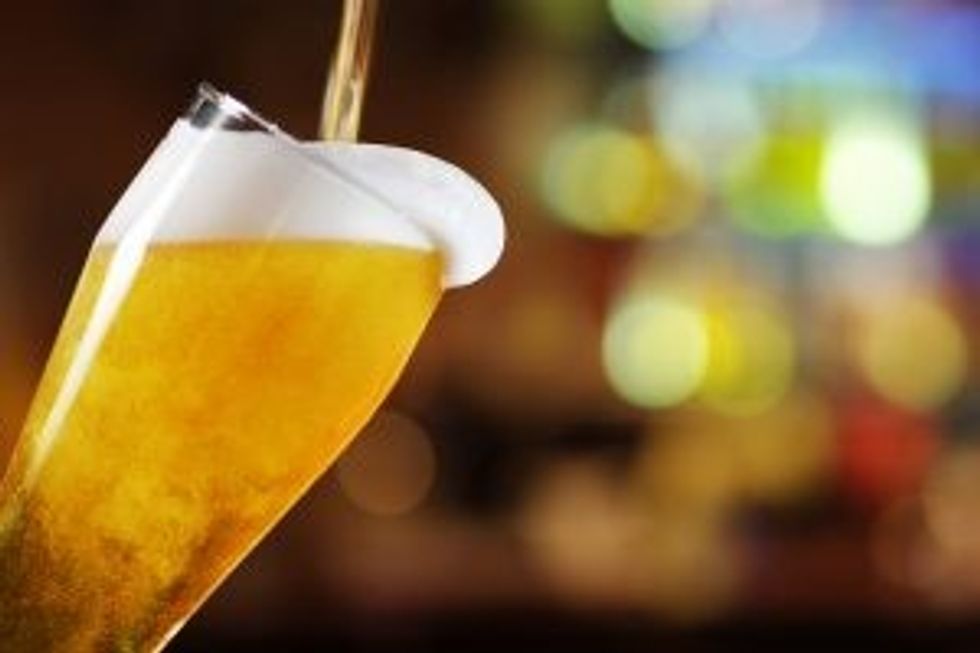
Another category that is seeing huge growth is the no-and-low category. There is a growing trend in the UK that more and more beer drinkers look to moderate their alcohol consumption without eliminating it entirely. So, the low-and-no alcohol category has been going from strength to strength in recent years – now worth £125 million across the off-trade channels.
“Around 60 per cent of Britons expect to change their eating and drinking habits in 2023, while 51 per cent say an increased focus on ‘health and wellness’ is the primary driver of this change,” according to a recent report. “Around 43 per cent aims to cut down on alcohol consumption and 65 per cent will focus on health and wellness more than they did in 2022.”
It is in that context that no-and-low-alcohol beer also over-indexes in the summer months. In 2022, the month of August had higher sales of low-and-no alcohol beer than any other month, and sales were 25 per cent higher than the more commonly associated dry January.
Asahi’s Peroni Nastro Azzurro 0.0 per cent is the most successful launch in the category this year and continues to grow its share. This beer offers the same superior taste experience as the original Peroni Nastro Azzurro – delivering a crisp and refreshing Italian taste – now as an option with zero alcohol.
“In fact, 50 per cent of all low-and-no-alcohol beer store features and displays occurs in just the two months of December and January,” adds Young of Asahi UK. “If retailers truly want to offer consumers responsible drinking choice, they must increase the presence of no-and-low-alcohol beer throughout the year.”
Peroni Nastro Azzurro 0.0 per cent, 4x330 ml is the number-one four-pack by value RoS in impulse. Asahi Super Dry 0.0 per cent entered the market in January 2023 and will benefit from the brand’s sponsorship of Manchester City Football Club and Rugby World Cup 2023.
“It’s important to stock a range of no-and-low-alcohol options, because we know these beers are growing in popularity so ensure you have some credible options in your chiller,” adds Price of KBE Drinks. “One such option could be our Sagres 0.0 per cent which comes in packs of 24 x 330ml cans or bottles and is suitable for both vegans and vegetarians. It’s warm and golden in colour, and comes with a taste profile which is mild and fruity with a slightly bitter edge.”
Beer continues to dominate the no-and-low category with a value share of 1.8 per cent of the total beer category, according to Nielsen.
“The number of alcohol-free occasions is increasing, with 41 per cent of UK adults having drunk no-or-low alcohol drinks in the past three months, and we expect this to remain a key trend,” says Fawell of Molson Coors. “While there are more 0.0 per cent options available than ever before, we know consumers want zero alcohol drinks that still truly deliver on flavour.”
To help retailers capitalise on this growing trend, Staropramen has perfected a method to offer just that – a full-flavoured Czech pilsner with zero alcohol – Staropramen 0.0. The brand maintains a subtle sweet flavour and soft malty-fruity aroma, which is complemented by its own unique flavour profile and crisp finish.
“This activity builds on Staropramen’s 9.2 per cent value sales growth momentum, after a multi-million-pound brand investment in 2022,” adds Fawell. “The introduction of Staropramen 0.0 also builds on our ‘no-and-low’ offering, which includes options for premium lager with Staropramen 0.0 and Cobra Zero, cider with Rekorderlig Alcohol Free, and ale with Doom Bar Zero.”
Besides, Corona Cero, Budweiser Zero and Stella Artois Alcohol-Free, have seen double digit growth since launching, according to Kantar, making them a great choice for customers looking to provide their shoppers with alcohol-free alternatives of their favourite beers.
Stout time
While no-and-low-beer has continued to grow by double-digits and outperformed the declining beer category, Stout significantly over indexed with a 14.2 per cent share of No-and-low-beer compared to just 4.2 per cent of total beer.
The Stout segment is currently worth £150 million in the off-trade with 93 per cent of sales made up of just one brand: Guinness (Diageo).
BrewDog is providing retailers and consumers with choice by introducing Black Heart (ABV 4.1 per cent) to its core range, a brand-new draught stout. “Available in 4 x 440ml can multi-packs, Black Heart is a no-nonsense dry-Irish style stout, brewed in and for this century. It's smooth, it's creamy, it's all head and it's all heart,” says Thompson of BrewDog PLC.
Despite holding a steady 3.0 per cent share of total beer sales for past three years (MAT), overall sales have struggled, helped marginally by the introduction of the leading brand’s alcohol-free variant. This provides an opportunity for a fresh distinctively positioned brand to enter the category and unlock incremental growth.
Summer means cider
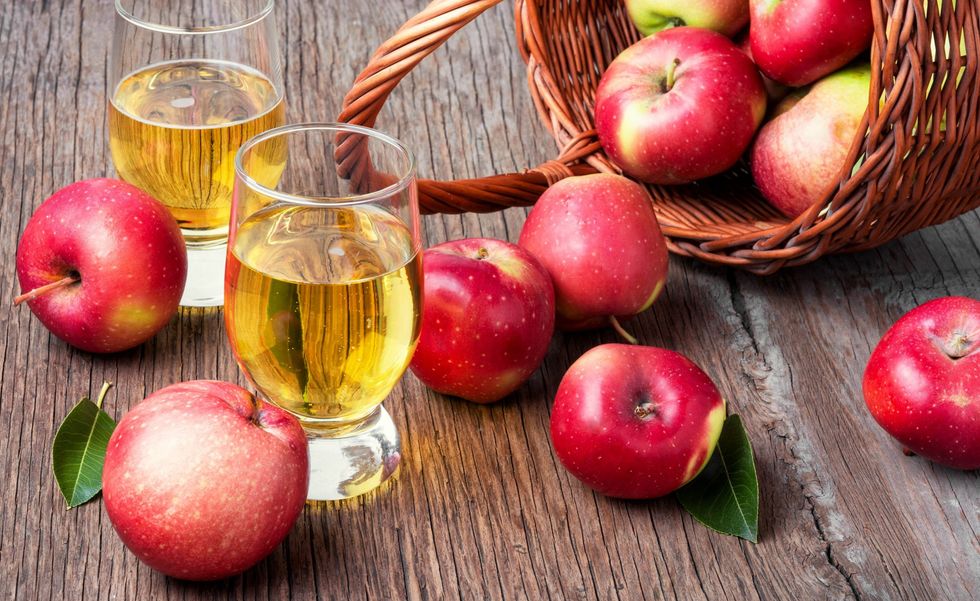
UK cider market is estimated to be worth £544 million in convenience channels, down 4.1 per cent as off trade cider sales stabilised against a backdrop of pandemic-related growth.
Following a rockier 2021, where the category struggled against the highs of 2020, last year cider in convenience bounced back, gaining a bigger share of total cider sales (48.6 to 50.2 per cent). The channel now represents more than half of sales, with performance also outpacing total market. Across the board, mainstream apple and premium apple ciders are the key growth drivers and the products that should be on retailers’ radars.
However, when it comes to summer, stocking fruit cider – which is far more seasonally reactive than apple ciders – is a must. “Over the past year we’ve witnessed a real shift towards traditional flavours with apple cider now accounting for just under two-thirds (63 per cent) of cider sales in total retail,” says Darryl Hinksman of Westons Cider. “This has been gradually increasing for a few years now, up from 60 per cent in January 2021, while flavoured cider has balanced out at around a third of the off-trade market.”
Apple cider shoppers spend almost double the amount compared to flavoured cider shoppers (£77.91 vs £31.54 annually). In other words, it’s apple cider shoppers who are most important to the category year-round. So, while it’s wise for independent retailers to flex their ranges to include fruity serves throughout the summer months, these should take up a maximum of a third of shelf space, with the lion’s share dedicated to quality apple serves.
“Henry Westons is presently UK’s fastest-growing off-trade cider brand, worth £77.6 million,” estimates Hinksman. “In fact, a bottle of our bestselling Henry Westons Vintage is now sold more than once every second and is by far the most popular SKU in convenience (+8.7 per cent YOY) with sales a staggering £8.3 million ahead of the second-place product.”
Henry Westons characterises the authentic and traditional ciders serves which are drawing in more shoppers, while, as a premium option, it offers shoppers a trade up choice and a high-quality, affordable treat making it a must stock for convenience store owners.
As a brand, Henry Westons delivers on some of the most important category trends. A crafted cider, it sits in a sub-category that is in strong growth (+10 per cent) and is increasingly stealing share within total cider (from 16.4 per cent in 2021 to 19.5 per cent in 2022).
“Increasingly we’re seeing authenticity, craft and connoisseurship of growing interest to consumers and showing the most growth and value potential,” adds Hinksman. “Today’s consumers are willing to pay more for premium products that are made in a traditional way and have heritage and provenance attributes.”
To maximise opportunities, convenience retailers should recognise the importance of backing brands that offer something different and interesting to their customers.
As a leading brand in the fruit cider category demonstrating growth and with a comprehensive programme of marketing support, Brothers Drinks Company approaches a very busy summer period in good health.
“The fact that Brothers Cider is such a modern brand and a trailblazer in innovative flavours is what really makes it stand out from the crowd and impress consumers,” feels Nicola Randall of Brothers Drinks Company. “However, this forward-thinking approach to the category shouldn’t belie the fact that Brothers is a cider brand with real heritage. This year marks the 365th anniversary of Gabriel Showering first selling his drinks in Shepton Mallet, and his descendants have been making honest, quality ciders in the heart of Somerset ever since.”
This spring Brothers Drinks Co. launched 500 ml bottles of 5 per cent ABV Festival Apple Cider, a product only previously available in cans. It also introduced another intriguing flavour to the cider category with the launch of Brothers Raspberry Ripple.
“Our latest flavour is a combination of delicious raspberry swirled with delicate vanilla, and is best served chilled over ice,” says Randall. “Introducing this classic ice-cream flavour to the cider category will help stockists tap into consumer excitement around summer socialising occasions.”
Brothers 4 per cent ABV Raspberry Ripple is available in 500ml and 330ml glass bottles, and in 6x330ml and 10x330ml multipack cans. The introduction of the new flavour is being supported by a bespoke marketing campaign comprising influencer partnerships, social media activations, and visibility-driving POS for depots and stores.
“When it comes to cider, independent retailers should stock flavours that are innovative and off the beaten track, as these are the ones which will appeal most to impulse purchasers and those shopping in convenience stores,” says Randall. “Flavour innovation is what we do best at Brothers and the brand is renowned for its pioneering cider flavours; we break the mould and bring all-new flavours to the category. From Toffee Apple to Cherry Bakewell and from Marshmallow to Rhubarb & Custard, we know that our array of curious combinations has broad appeal amongst a wide range of consumers.”
While this year has caused many to pay more attention to what they are spending their hard-earned money on, it is worth remembering that the average consumer was feeling the pinch even before 2022. Since Covid hit, the number of financially constrained consumers has risen from 23 to 59 per cent.
“Aston Manor’s ethos is all around affordability,” says O’Brien of Aston Manor Cider. “We are here for shoppers, helping them to save with our affordable cider, allowing them to focus their spend on what really matters. Our range provides shoppers with an affordable solution, without trading down on quality, so they can be assured they are not compromising when needing to spend a little less cash on cider.”
Cornish Orchards, the fastest-growing top-10 premium cider brand, launched two fruit ciders that will help consumers to trade up and drive category profits for retailers this summer.
Cornish Orchards Raspberry & Elderflower Cider and Cherry & Blackberry Cider arrived in store with ABV of four per cent, offering the perfect accompaniment for the at-home al-fresco drinking occasion.
Offering a delicious, perfectly balanced, gentle sparkling cider made with crisp hand-picked dessert apples, the new Cornish Orchards flavours are available in 500ml bottles.
“Many consumers continue to value convenience and focus on their drink experience at home,” feels O’Brien. “We expect consumers to continue this focus on convenience and, for many, this means buying chilled cider straight from the fridge to enjoy at home, so retailers can stock options to support them in this.”
Larger multi-packs are also important and ensure retailers can help consumers keep their supply stocked up to enjoy with friends and family during BBQ season. Product packs such as the pint cans in Crumpton Oak‘s four-pack, are a popular option to enable consumers to keep their supply stocked up with hygienic single-serve options.
Premium offerings
Premiumisation has been driving growth across the alcohol category, and cider is no different in this sense. More consumers are looking for a premium cider experience and retailers are increasingly looking to elevate their cider range to cater for different tastes and occasions.
“One key takeaway from the cider category so far in 2023 is that consumers value heritage when it comes to choosing a cider, as it’s something that really resonates with those looking for a more premium option,” informs Fawell of Molson Coors Beverage. “That’s why Aspall Cyder remains such a popular option. It has been produced at the original Aspall Cyder House for almost three hundred years with a crisp flavour that is unique to ciders from the East of England.”
“What we’ve seen during previous times of economic uncertainty is consumers continuing to spend money on smaller indulgences while cutting down on bigger expenditures,” shares Fawell. “Spending a little more on a premium drink could be one of the small indulgences that people are willing to treat themselves with. Therefore, we expect more premium cider lines like Aspall Cyder to remain popular choices.”
Aspall Cyder is the no.1 super premium cider in Great Britain, and sales increased in value by 25 per cent throughout 2022, with particularly strong sales during the final quarter of the year. Premium flavoured ciders remain a key part of the cider category and are worth more than £230 million to retailers.
“Retailers must make sure there is a broad range of options, from berry-flavoured favourites like Rekorderlig Strawberry-Lime, to tropical and citrus varieties, including Rekorderlig Blood Orange and Rekorderlig Watermelon-Citrus, is key,” adds Fawell. “Indeed, tropical ciders account for 16 per cent of the premium flavoured cider category, while citrus ciders have doubled in size over the last year - now with a 12 per cent volume share of the category.”
When it comes to cider, independent retailers should stock flavours that are innovative and off the beaten track, as these are the ones which will appeal most to impulse purchasers and those shopping in convenience stores.
A good selection of chilled brands is important, whether its single serves or four packs, as well as some larger pack formats to appeal to those people who are perhaps looking to save money, enjoy a ‘big night in’ or are attending an outdoor event or summer party.
“Cider is the impulse drink of choice so retailers can respond to this by offering a 100 per cent chilled range, stocking a wide range of options in cans and bottles,” says O’Brien of Aston Manor Cider. “If a store has limited chiller space, then it’s worth retailers at least ensuring there are a good selection of flavoured ciders available chilled alongside top selling ciders.”
“When a shopper buys cider on impulse, having it chilled and ready to drink are often more important than price, however promotions still play an important role in communicating value-for-money that will help to win longer term customer loyalty,” adds O’Brien.
One of the keyways that independents’ offerings can beat the multiples is through chilling. The prominent availability of chilled products is essential to meet the requirements of impulse shoppers and, importantly, offer something not widely available in the multiple grocers.
“Providing chilled stock is key in meeting the needs of convenience shoppers year-round but is particularly important if retailers want to maximise summer cider sales,” seconds Randall of Brothers Drinks Company. “A full chiller will always pay dividends in the summer months; the importance of chilling to meet the needs of spontaneous purchasers can’t be over-stated.”
“With more cider sold through convenience than any other retail channel, there’s a clear opportunity for independents to drive profits if they get their fixtures right,” adds Hinksman of Westons Cider. “With space at a premium, this means prioritising bestsellers which tap into important category trends around traditional flavours and crafted propositions. Despite the growing popularity of crafted ciders in the convenience channel (+26 per cent YOY) – driven by our characterful Henry Westons range – we know that independent retailers are missing out on sales due to lower levels of distribution.”
“We would urge retailers to play to their strengths and cash in on impulse purchases as cider is more often than not bought to be enjoyed that day – even more true as the weather warms up and BBQ season approaches,” says Hinksman. “This means it’s crucial retailers adequately chill cider. Simply put, shoppers don’t want to buy lukewarm cider, so if retailers haven’t got the temperature right, they will miss out on sales.”
Boost your sales
Beers, lagers and ciders should be merchandised in three discrete blocks to persuade customers.
Some consumers will walk into a store with a completely open mind about what they intend to buy but the vast majority will have a pre-determined category preference.
Hence, it is important to “block” similar drinks together to suit the majority of shoppers and make their experience as straightforward as possible.
In April, BrewDog rolled out a pack update across its entire multi-pack range, to help differentiate between the various beer styles and provide stand-out on shelf.
The refresh sees the packs move from all white, to integrate the can creative of each of its beers, making them easier to differentiate in the chiller.
The new BrewDog packs provide three-word descriptors focusing on taste, along with a visual of the beer in a glass, highlighting the colour of the liquid, to help shoppers more easily select the specific beer style they want.
In June 2023, OOH advertising will showcase Asahi’s new flavours across London and South-West England, and a 30-second VOD creative will follow in July on ITVX, Sky and All 4. In addition, the brand will showcase its food credentials with a partnership with digital platform - Mob Kitchen, which has developed bespoke recipes using the brand’s cider.
Award-winning British cider brand from Aston Manor Cider, Crumpton Oaks, launched a four-pack pint can last year to broaden the brand’s consumer base, attract new shoppers to the category, and reinforce its quality and value proposition.
“The launch came after the brand’s success at the 2021 World Cider Awards where Crumpton Oaks achieved silver in the ‘Sparkling Cider’ category,” says O’Brien, of Aston Manor Cider.
Preparing to return to screens with its popular “Straight Outta Crumpton” TV advertising campaign this Summer, Crumpton Oaks offers great value to shoppers, especially important now, when shoppers are looking to manage spend. Shoppers can get their hands on award-winning, great quality cider that is at an affordable range.
“Ultimately, shoppers are seeking out both quality and convenience. To really take advantage of this, independent retailers should consider seasonal in-store displays and incorporating bestsellers in cross-category promotions,” informs Hinksman of Westons Cider.
Keeping chilled BBQ produce – such as burger patties and sausages – or bagged snacks close to the cider and beer fixtures will encourage shoppers to spend more time in-store and driving higher volume sales in the process.
“Of course, the biggest limitation to cider sales is it often runs out-of-stocks. So, our top merchandising advice is to ensure shelves are stocked with bestselling products at all times, particularly ahead of periods of busy footfall such as weekends and bank holidays,” concludes Hinksman.






